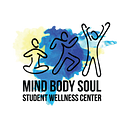TAKES ACTION
Throughout your time at Marquette, you’ve probably attended the “Bringing in the Bystander” training put on by the Student Wellness Center. “Red Watch Band” training is also a requirement that focuses on alcohol intervention. During these sessions, you learned about skills and strategies you can utilize to effectively intervene in a situation where someone needs help. The commonality that exists among these trainings is the aspect of bystander intervention — a skill not only useful in the Marquette community, but in communities beyond. TAKES ACTION is the third bystander intervention program that students will be exposed to, and it’s focused primarily on communities. Red Watch Band and Brining in the Bystander provide students with knowledge about effective interventions for those in need. TAKES ACTION concentrates on the applicability of bystander intervention in the community setting — in your community setting.
As much as we might think that instances of harm are isolated events, everyone connected to a possible victim can be affected by the inaction of one bystander. For instance, not reporting the occurrence of abuse you observe at work not only affects the victim, but it also affects their family, friends, significant other, etc. Hypothetically, the victim might stop calling their family because the abuse has taken a toll on their psychological health, and they would rather be alone than interact with other people. This is just one possible outcome, and a different one might have played out if someone in the victim’s community had stepped in to make a change.
Throughout TAKES ACTION training, the community is emphasized — and there’s a reason for that. It’s because communities serve as the foundation for individuals. Society and culture play an immense role in the support, or lack thereof, of an individual living in a particular culture. However, if the individual doesn’t support the community, it falls apart, and thus can provide no support for the individual anymore. It’s a mutual, dynamic relationship.
The community contributes to the wellbeing of the individual, and the individual contributes to the wellbeing of the community.
People are intertwined. Because of these connections, the behavior of one person has the power to influence the behavior of so many others. Marquette students are called to “Be the Difference”. TAKES ACTION calls you to be the difference as well.
In response to this call for action, some might say, “well, it’s just not that easy”, and they’re right. It’s far from easy. So many variables affect if and how people intervene. One of the most significant predictors for bystander intervention are the situational variables. These might include the number of bystanders present, the cost of helping, the environment, and even how you perceive the identities of others. We take all these variables into consideration when we decide to intervene or not. Furthermore, the bystander effect is a large deterrent to bystander intervention. The bystander effect describes the phenomenon in which someone is less likely to intervene in an emergency when others are present than when he or she is alone. We conform to the group’s rules to fit in most of the time, and it makes us less likely to help when it breaks the status quo. However, just because something is difficult doesn’t mean we shouldn’t do it. Being the difference isn’t a walk in the park; it’s a challenge — a challenge that we’re all called to undertake.
So, what is TAKES ACTION? It’s a Marquette model for bystander intervention, and it’s an acronym. TAKES is all about assessing the situation to keep your community safe. Threat Assessment Keeps Everybody Safer. A key facet of this is being personally aware of your environment. It serves as a preventative measure so that dangerous or harmful situations don’t occur in the first place. Possible barriers to TAKES might be having your headphones in when you’re walking home late at night. We might be able to stop events before they happen if people were more aware of their surroundings.
Next, the ACTION spells out important steps to take in the bystander intervention process. Aware Create Tag team Intervene Open dialogue Negotiate solutions. This TAKES ACTION acronym serves as a template for bystander intervention in your community, and it encourages bystanders to conduct the intervention in a safe environment. For now, that was a quick snapshot. You’ll learn more about this model for bystander intervention during your TAKES ACTION training.
Finally, intervening can be individualized; it’s far from a “one-size-fits-all” process. Different intervention strategies can be utilized to suit each bystander’s needs. Unfortunately, as much as we try to prevent instances of harm and intervene when we can, sometimes the harm has already been done, and victims may need your support. It’s important to not blame the victim, no matter what the situation was. Show respect. Be empathetic. Most of all, treat others as you would wish to be treated.
The Marquette community is a family. At least, that’s what it’s supposed to be. Sometimes life gets in the way, and we forget to check-in on each other. On the other hand, maybe we decide to say nothing, or do nothing, because no one else is saying anything, or doing anything. What if your sister, brother, parent, or guardian were in trouble? Would you do something then? A difference in family lineage doesn’t make us any less human. People help people. It’s been that way for centuries, it’ll continue to be that way for many more, and it needs to be that way, right here, right now.
